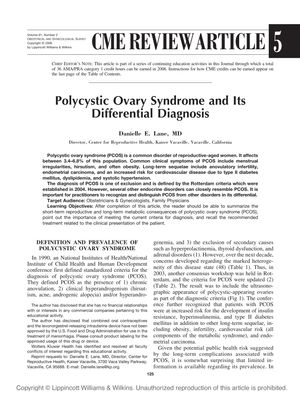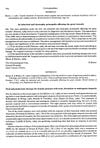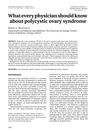Polycystic Ovary Syndrome and Its Differential Diagnosis
January 2006
in “
Obstetrical & Gynecological Survey
”

TLDR The document concludes that correct diagnosis and management of PCOS are important, and more research is needed on its risks and treatments.
The 2006 document outlines the diagnosis and management of Polycystic Ovary Syndrome (PCOS) and conditions with similar symptoms. PCOS affects 3.4-6.8% of reproductive-aged women and is diagnosed using the Rotterdam criteria, which include chronic anovulation, hyperandrogenism, and polycystic ovaries, while excluding other endocrine disorders. Differential diagnosis is crucial, with conditions like hypogonadotropic hypogonadism, hyperprolactinemia, nonclassic congenital adrenal hyperplasia (CAH), androgenic alopecia (AGA), and androgen-producing tumors considered. Hyperprolactinemia management includes dopamine agonists, which are successful in 80-90% of patients. For PCOS, lifestyle modification is recommended, with additional treatments for menstrual irregularities, hyperandrogenism, hirsutism, and insulin resistance. The document also emphasizes the need for further research on PCOS, particularly regarding cardiovascular disease risk and effective management strategies, especially in adolescents.


